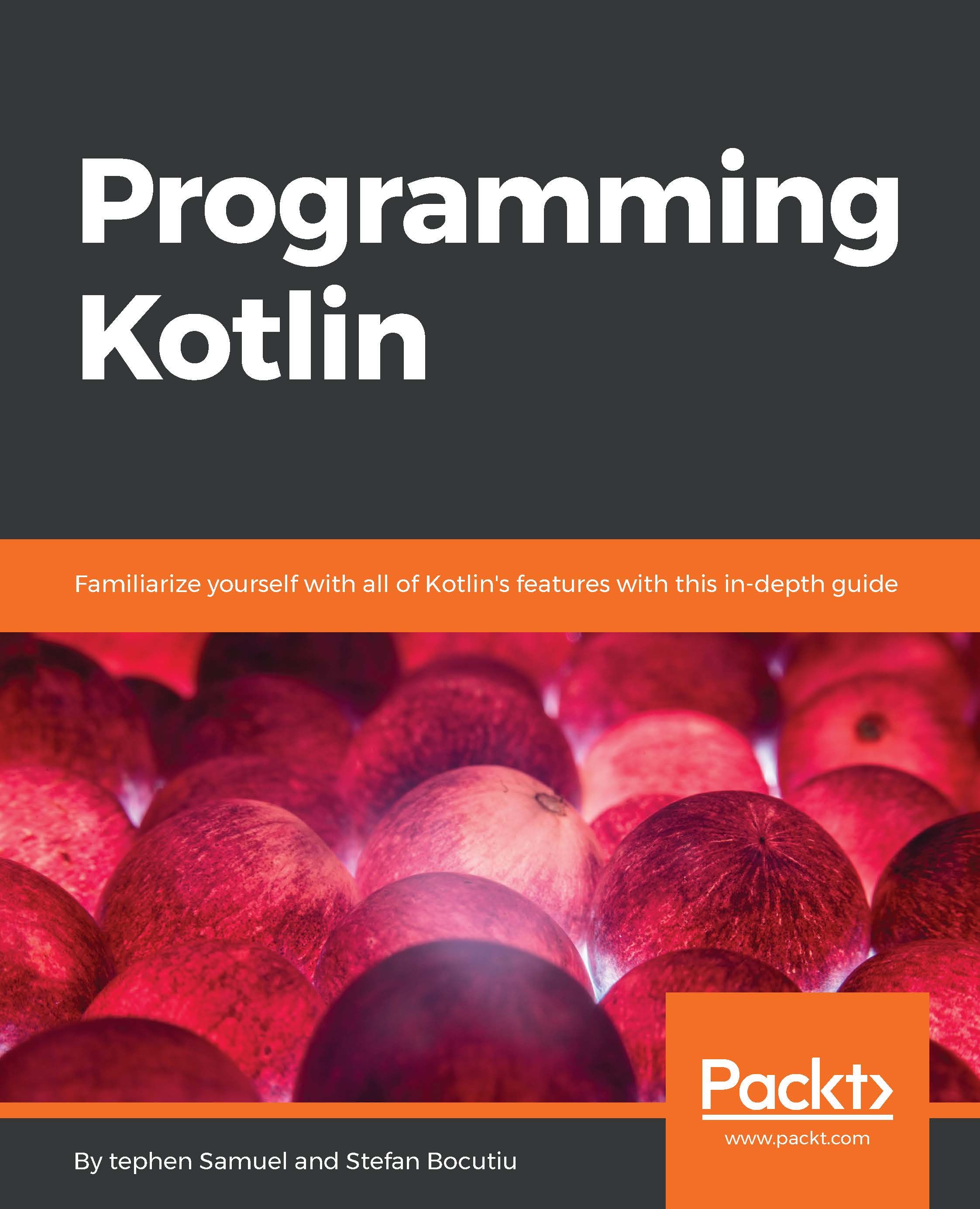-
Book Overview & Buying

-
Table Of Contents

Programming Kotlin
By :

Programming Kotlin
By:
Overview of this book
 Free Chapter
Free Chapter
 Sign In
Start Free Trial
Sign In
Start Free Trial

 Free Chapter
Free Chapter
It is time to write code. In this chapter, we will go over and write the typical entry code for every language: the famous Hello World! In order to do that, we will need to set up the initial environment required to develop software with Kotlin. We will provide a few examples using the compiler from the command line, and then we will move towards the typical way of programming using the IDEs and build tools available.
Kotlin is a JVM language, and so the compiler will emit Java bytecode. Because of this, of course, Kotlin code can call Java code, and vice versa! Therefore, you need to have the Java JDK installed on your machine. To be able to write code for Android, where the most recent supported Java version is 6, the compiler needs to translate your code to bytecode that is compatible at least with Java 6. For this book, however, all the code examples will be run with Java JDK 8. If you are new to the JVM world, you can get the latest version from http://www.oracle.com/technetwork/java/javase/downloads/index.html.
In this chapter you will learn how to:

